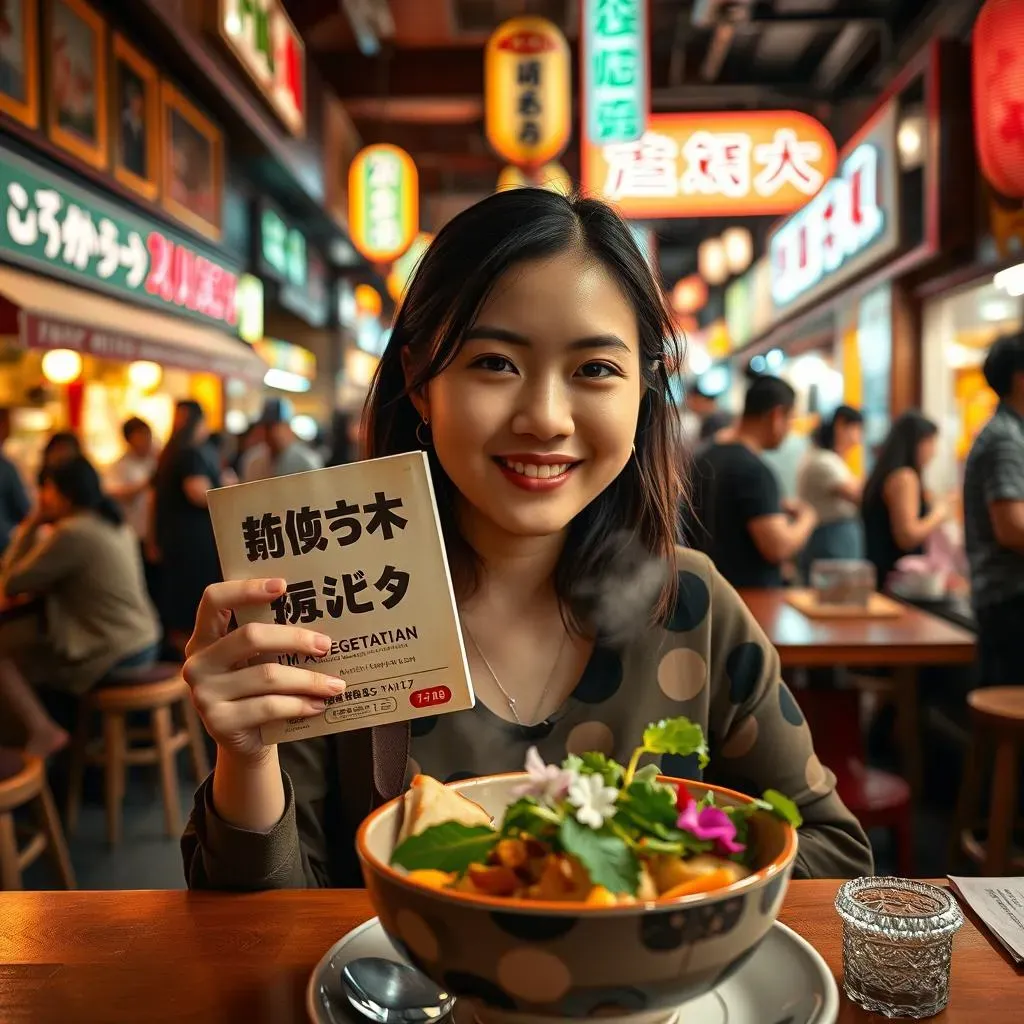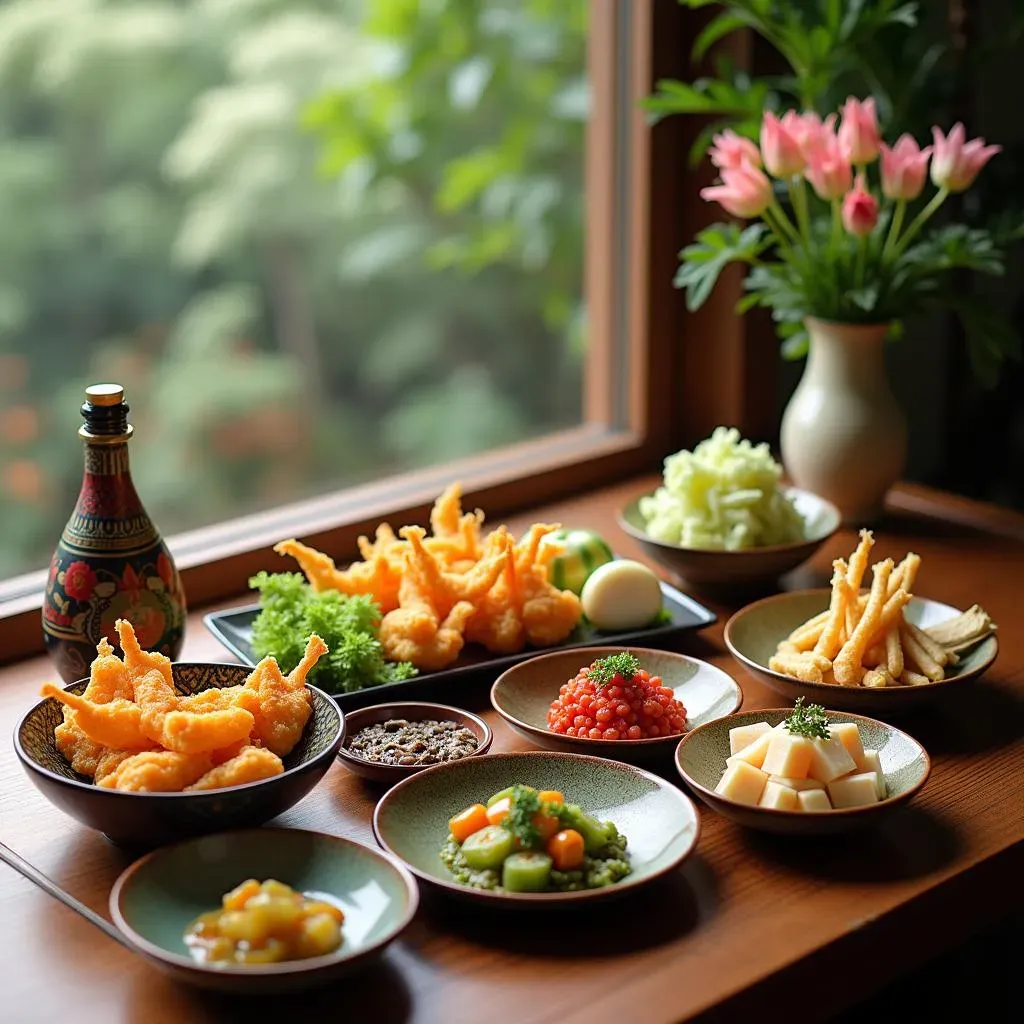Table of Contents
Thinking about visiting Japan but worried about finding food as a vegetarian? You're not alone! It might seem like a land of seafood and meat, but the truth is, Japan's culinary scene is evolving. While it can be tricky, especially with the common use of dashi (fish stock), it's absolutely possible to have a fantastic, meat-free food experience. This guide will help you navigate the delicious world of the Japanese vegetarian restaurant. We'll cover essential phrases, handy translation tools, and how to avoid hidden fish stock. We’ll also explore amazing vegetarian Japanese dishes beyond just tofu and share some of our favorite spots in cities like Tokyo and Kyoto. Prepare to discover that Japan has more to offer vegetarians than you might think. So, get ready to embark on a flavorful journey, where we'll reveal the secrets to enjoying incredible meat-free meals in Japan.
Navigating the Japanese Food Scene as a Vegetarian
Navigating the Japanese Food Scene as a Vegetarian
The Dashi Dilemma and Language Lifesavers
so you're heading to Japan and you're not into fish? That's cool, but here’s the thing, dashi is everywhere. It's a fish-based stock used in tons of Japanese dishes, even ones that look vegetarian. It's like the secret agent of Japanese cooking, hiding in plain sight! Learning a few key Japanese phrases is a game-changer. Stuff like "I'm a vegetarian" (私はベジタリアンです - *watashi wa bejitarian desu*) and "no fish, please" (魚はだめです - *sakana wa dame desu*) can save you from some unexpected seafood surprises. Don't worry about sounding perfect, even a little effort goes a long way. Think of it like trying to order coffee in a new city, you might stumble a bit but you’ll get your caffeine fix.
Also, translation apps are your best friend. Google Translate can be a lifesaver for deciphering menus and food labels. I once accidentally ordered what I thought was a veggie side dish that turned out to have a sneaky fish flake on top. Lesson learned! Don't be shy about whipping out your phone and scanning everything. Another pro tip? Print out a dietary card in Japanese, explaining exactly what you can't eat. This is especially useful in smaller restaurants where English might not be spoken. It's like having a tiny translator in your pocket, always ready to go.
Phrase | Japanese | Pronunciation |
|---|---|---|
I'm a vegetarian | 私はベジタリアンです | Watashi wa bejitarian desu |
No fish, please | 魚はだめです | Sakana wa dame desu |
No meat, please | 肉はだめです | Niku wa dame desu |
Is this vegetarian? | これはベジタリアンですか? | Kore wa bejitarian desu ka? |
Planning and Tech Tools
So you've got the language part down, now let's talk planning. Happy Cow is your secret weapon for finding vegetarian and vegan restaurants in Japan. It's like a treasure map for plant-based food, showing you where all the good stuff is hiding. I always check it before heading to a new city, it’s saved me from many a sad salad. Major cities like Tokyo, Kyoto, and Osaka are generally easier for vegetarians, boasting a wider range of options, including traditional Buddhist cuisine, shojin ryori, which is always vegetarian. Think of it like leveling up in a video game; the bigger the city, the more vegetarian options you unlock.
Don't forget about that data SIM! Having access to the internet is essential for navigating menus, finding restaurants on the fly, and using your translation apps. It's like having a super-powered GPS for food. If you're staying in a ryokan (traditional Japanese inn), let them know about your dietary needs in advance. Many ryokans can prepare amazing vegetarian kaiseki meals (a multi-course Japanese dinner), it’s a truly special experience. Also, don't underestimate the power of self-catering. Japanese supermarkets have some cool and interesting ingredients that you can use to whip up your own meat-free dishes. It's like being a culinary explorer, discovering new flavors and ingredients along the way.
MustTry Vegetarian Japanese Dishes and Tofu Delights
MustTry Vegetarian Japanese Dishes and Tofu Delights
Beyond Sushi: Exploring Vegetarian Japanese Cuisine
so you might be thinking, "Japanese food without fish? Is that even possible?" It totally is! There’s a whole world of delicious vegetarian options, you just need to know where to look. Tempura, for example, isn't just about shrimp. You can get amazing veggie tempura with sweet potato, pumpkin, and eggplant. It's crispy, it's light, and it's perfect with a little dipping sauce (just double-check it's dashi-free). Then there's tsukemono, which are Japanese pickles. They come in all sorts of flavors and are a great way to add a tangy kick to your meal. Don't underestimate the power of a good pickle!
Also, certain types of noodle dishes can be vegetarian-friendly. Soba and udon noodles themselves are usually fine, but the broth is the key. Look for places that offer a vegetable-based broth or ask if they can make it without dashi. It's like a little treasure hunt, finding those hidden gems on the menu. And let's not forget about rice! It’s the backbone of so many Japanese meals and is naturally vegetarian. Sometimes, simplicity is the best, a perfect bowl of fluffy rice can be so satisfying.
Dish | Description | Vegetarian Notes |
|---|---|---|
Vegetable Tempura | Lightly battered and deep-fried vegetables. | Ensure the dipping sauce is dashi-free. |
Tsukemono | Assorted Japanese pickles. | Generally vegetarian; check if any contain fish-based ingredients. |
Vegetable Soba/Udon | Buckwheat/wheat noodles with a vegetable broth. | Confirm the broth is vegetable-based and dashi-free. |
Tofu: The Star of the Show
Alright, let's talk about tofu. It's not just a bland block of soy; it's a culinary chameleon! In Japan, tofu is treated with the respect it deserves. There are so many ways they prepare it. Agedashi tofu, for example, is lightly fried and served in a savory broth. It's got a crispy outside and a soft, custardy inside. Hiyayakko is another great one, it’s chilled silken tofu with toppings like ginger, soy sauce, and scallions. It's simple, refreshing, and perfect for a hot day. It's like tofu's greatest hits, all in one place.
Then there’s tofu dengaku, which is grilled and glazed with a sweet miso sauce. It’s like a savory candy! And don’t forget about yudofu, which is tofu simmered in hot water and served with various condiments. It’s a classic comfort food. Think of it as a blank canvas, ready to soak up all the delicious flavors. Japanese chefs have really figured out how to make tofu exciting, it's not just a side dish, it’s a star.
Shojin Ryori: Zen Buddhist Cuisine
If you want a truly authentic vegetarian experience, you have to try shojin ryori. This is traditional Zen Buddhist cuisine, and it's entirely plant-based. It's all about balance and simplicity, using seasonal ingredients to create dishes that are both delicious and nourishing. It's often served in temples, and it's a great way to experience Japanese culture while enjoying a guaranteed vegan meal. It's like stepping back in time, experiencing a meal that has been refined over centuries. Many dishes feature tofu in various forms as well as seasonal vegetables, and it's always a feast for the senses.
Shojin ryori is not just about the food, it's about the whole experience. It’s often served in a serene setting, encouraging mindful eating. It's like a mini-retreat, a chance to slow down and appreciate the simple things. Even if you're not a Buddhist, you can appreciate the artistry and care that goes into each dish. It's a unique culinary adventure that will definitely leave you feeling good inside and out. It’s more than a meal, it’s an experience.
Finding the Best Japanese Vegetarian Restaurants
Finding the Best Japanese Vegetarian Restaurants
City Hotspots and Hidden Gems
so you're ready to ditch the dashi and dive into some serious vegetarian eats? Let's talk about where to find these magical places. Major cities like Tokyo, Kyoto, and Osaka are your best bets. They've got a mix of everything from dedicated vegan restaurants to traditional places with vegetarian options. Think of these cities as the "boss levels" in your vegetarian food quest, they offer a variety of choices for every taste. But don't just stick to the main tourist areas, sometimes the real gems are tucked away in the smaller neighborhoods. It's like going off the beaten path to find a secret treasure, you never know what you might discover.
I remember stumbling upon a tiny restaurant in Kyoto, hidden down a side street, that served the most amazing vegetarian ramen. It wasn't even listed on any of the apps, I just happened to walk by. That's part of the fun, the hunt for those hidden spots. Don't be afraid to explore, get a little lost, and see what you can find. It's like going on an adventure where your reward is a delicious meal.
Restaurant Apps and Local Knowledge
Of course, we don’t want to rely on luck alone. Restaurant apps like Happy Cow and Vegguide are your go-to tools for finding vegetarian and vegan restaurants. They've got reviews, menus, and maps, making it super easy to plan your meals. It's like having a personal food concierge in your pocket. But also, don't be afraid to ask locals for recommendations. Hotel staff, shopkeepers, and even fellow travelers might have some great tips on where to find the best vegetarian grub. It's like getting inside information from the people who know best.
Sometimes the best restaurants are the ones that aren't widely known, the ones that locals frequent. I've had some amazing food experiences just by asking around. It's like being part of a secret club, discovering the hidden treasures that only the insiders know about. Remember, a smile and a "sumimasen" (excuse me) can go a long way in Japan. So, be curious, be friendly, and be ready to discover some amazing vegetarian food.
Resource | Description | Why Use It? |
|---|---|---|
Happy Cow | App/website listing vegetarian and vegan restaurants. | Extensive database with user reviews and maps. |
Vegguide | Another popular app for finding vegan options. | User-friendly interface with helpful filters. |
Local Recommendations | Asking locals for tips and suggestions. | Discover hidden gems and unique dining experiences. |
Wrapping Up Your Vegetarian Adventure in Japan
So, there you have it! Navigating the Japanese food scene as a vegetarian might seem daunting at first, but with a bit of planning and the right tools, it’s totally doable and incredibly rewarding. From mastering a few key phrases to discovering hidden gems in bustling cities, you’re now equipped to find amazing meat-free meals. Remember, a little preparation goes a long way. Embrace the challenge, be open to new flavors, and most importantly, enjoy the fantastic vegetarian Japanese food waiting for you. It's not just about avoiding meat; it's about discovering a whole new world of culinary delights. Happy eating!